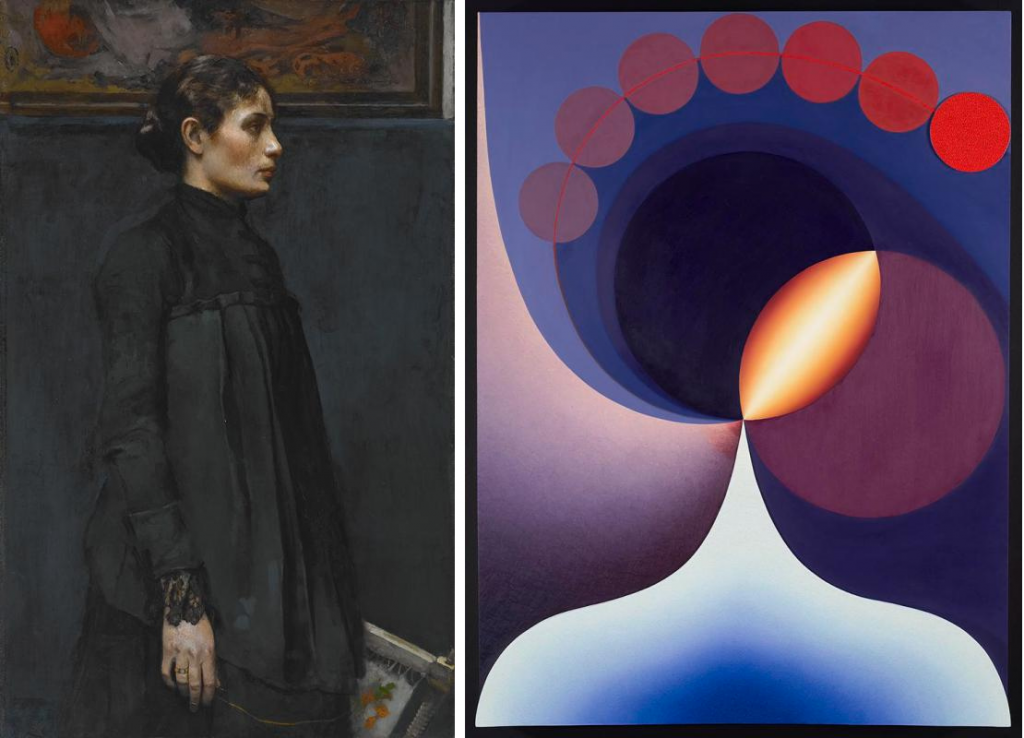It’s that thread of mystery that again brings us back to Mrs. Hitchcock—who may not appear to be hiding anything. But look again at the peculiar black dress she’s wearing. Elegant, perfectly painted, but also one that is decidedly not form-fitting at a time when corsets were all the rage. In fact, it’s a style of dress whose flowing form allows for greater comfort to the expectant mother wearing it. Melchers’s friend donned this nineteenth-century maternity dress a couple months into her pregnancy when posing for this likeness.
So you see—different, but similar. I love these types of connections between works—odd couples scattered across centuries.
Take some time to admire these paintings and think about the journey of motherhood that both paintings are addressing. And while any number of things could be keeping you apart from the mothers in your life right now, not just quarantines or the distance between galleries, I hope this post is a gentle reminder that we can often find connection, even in unlikely circumstances.
From all of us here at the museum, Happy Mother’s Day.
Written by Alejo Benedetti, associate curator, contemporary art, Crystal Bridges.




